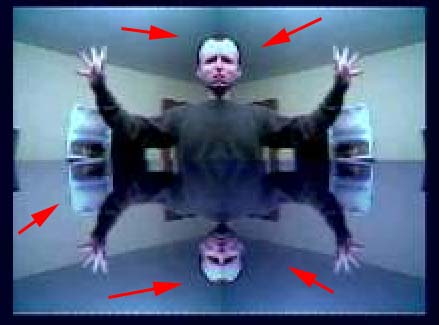 I didn’t understand why my Brightcove movies looked so pixelated and blurry, but now I understand: Brightcove has 2 display formats 480×360 pixels and 400×300 px, while my movie was 320×240 px. The biggest version of their player is used when you do a search on Brightcove and then play it from there. While if you go to a channel and click on one of the videos in there, it plays the smaller version of 400×300. In either situation, the player tries to fit your movie to a Brightcove standard size by either stretching or compressing it into the demanded aspect ratio (relation between width and height of the movie), while I wrongly presumed that the original size would be preserved.
I didn’t understand why my Brightcove movies looked so pixelated and blurry, but now I understand: Brightcove has 2 display formats 480×360 pixels and 400×300 px, while my movie was 320×240 px. The biggest version of their player is used when you do a search on Brightcove and then play it from there. While if you go to a channel and click on one of the videos in there, it plays the smaller version of 400×300. In either situation, the player tries to fit your movie to a Brightcove standard size by either stretching or compressing it into the demanded aspect ratio (relation between width and height of the movie), while I wrongly presumed that the original size would be preserved.
To see a bad example, click here. To view a better version of the same movie in YouTube, click here.
Better too big
If your movie is too big, there is not a problem unless aspect ratio is not equal to 4:3. Then your movie will look distorted because the player will stretch or compress the movie in one direction. If your movie is too small, the result will be blurry with clusters of rectangles jumping around as in my case. Here are some examples of good and bad dimensions:
- 240×180 (too small)
- 320×240 (too small)
- 400×300(Too small, the movie will enlarge)
- 480×360 (ideal)
- 640×480 (you would like to re-sample it to a manageable size, though)
- 400×320 (aspect ratio is wrong: 4:3,2 instead of 4:3)
- 480×400((aspect ratio is wrong: 4:3,333333 instead of 4:3)
So, my advice is: if Brightcove is an important channel for you and your movie isn’t big enough or the aspect ratio doesn’t fit 4:3, you might need to re-render or re-sample your movie to 480×360.
The disadvantage in that case is that if you have text in your movie, it will look not as good as in the original. To avoid that, you can use several workarounds. Watch out for my video tutorial on How to change a movie format without resizing. It will be available on 14 January 2008.
Avoid artifacts in compression
To avoid weird pixelation (artifacts) in a movie, I make sure that I use a movie for upload without any compression at all. Because all video channels will compress your movie regardless if you did it already or not. If you have a slow connection, it is probably not possible to upload a full movie( an uncompressed movie of 480×360 pixels, about 1 minute in length, can weight around 320Mb). In that case, I suggest you ask a friend who has a fast connection to help you out.

To create an uncompressed QuickTime movie, you set the compression type to “None” or to “Animation”. None will have no parameters to fill in, while Animation gives a very small compression. In the latter case, set the Key interval to 1 per frame. This way compression is kept to an absolute minimum. You will see that if you upload your movie like that, the quality will be much better.
Stay tuned on this subject, there is more to come in the near future since policies and methods change all the time and that is especially true in podcasting.

Very nice, thank you Rudolf